Rare Rides Icons: The Lincoln Mark Series Cars, Feeling Continental (Part XV)

Much to the delight of accountants at Ford’s headquarters in Dearborn, the new Thunderbird-based 1969 Lincoln Continental Mark III was an immediate sales success. It was a case of the right product (a personal luxury coupe) at the right time. The Mark III went head-to-head with its rival and closest competition, the Cadillac Eldorado.
And though the Eldorado nameplate had a long history and was better established than the Mark, Lincoln’s offering topped the Cadillac in sales in its first year. Part of that was down to an exceptionally long first model year that padded the figures, but credit also went to the excitement generated by the Mark. Mark III was all new in 1968 (for the ‘69 model year), while the front-drive E-body Eldorado had been on sale since 1967. Though a few updates happened within its debut model year (that ran from March 1968 to December 1969), product vice president Lee Iacocca knew his pet project needed additional updates to keep consumer interest going.
At this juncture, it’s appropriate to get some context on the overall Continental line. The two- and four-door Continental models of Elwood Engel’s design were on sale since 1961 without major updates. For its final year, the old Continental coupe was sold alongside the Continental Mark III. It was older, more conservative, and much less popular (and nobody remembers it).
Lincoln debuted a new generation Continental for the 1970 model year that was larger, more slab-sided, less dignified looking, and a return to body-on-frame construction. The new Continental was also very similar in appearance to the Mercury Marquis and Marquis Brougham. In 1970 Continental moved to share a platform with the Marquis that debuted in 1969, and essentially previewed Continental styling of 1970. In retrospect was that a good idea? Absolutely not.
Alongside the revised 1970 Mark III at Lincoln dealers were the Continental coupe and pillared hardtop sedan. The Town Car name reappeared again, this time as an interior package for the Continental sedan. It came with a vinyl roof as standard, a leather interior, and nicer carpeting. It would remain a trim package through 1971.
Though changes were required in a new model year, designers at Lincoln chose not to fettle the Mark III’s successful looks all that much. The front clip of the Mark III remained largely untouched, save for an edit to the corner marker lenses. On ‘69 models the lens was clear and lacked any amber tinting. In 1970 an amber section appeared and was placed vertically on the outside corner of the lens.
Nearby there was a new optional wheel cover design. Mark III’s wheel covers for 1969 were Sixties-looking and fluted, with veining (like on the old Mark II). In 1970 the new wheel cover was updated to a flatter disc design. It had a central chrome area that was flat like a dinner plate. The plate was surrounded by smaller, less notable veins.
Other visual identifiers of the 1970 Mark III included the redesigned wiper arrangement. The wipers on all 1969 examples were exposed and mounted to a panel between the hood and windshield. In 1970 that panel was raised and redesigned to conceal the wipers and make the hood look like one continuous piece of metal. Comparing the two, the concealed wiper look was much cleaner.
And while it was more complicated to hide the wipers, another change made things easier in 1970: the roof. In 1969 a painted roof was standard, which generated less profit at the time of sale and required more work at the factory for its smoother, paint-ready roof seams. The vinyl roof became a standard feature in 1970. No more worries about roof quality control at Wixom Assembly!
There was only one other visual change for 1970, as the side profile and rear design remained almost exactly as they were in 1969. The aforementioned amber lens edit was part of a new federal safety regulation for 1970, which also mandated red reflectors at the rear. Complying with government interference as cheaply as possible, cut-outs were made to the bumper at either corner, and a small red lens was installed. As a result, subsequent years of Mark III were never as clean looking at the rear as in 1969.
Elsewhere Ford made improvements in the name of safety. A locking steering column became standard equipment, as did a redesigned steering wheel. The wheel lost its horn ring and was swapped for a rim blow design.
Implemented across several brands for a very short while between 1969 and 1974, the rim blow wheel had a rubber pad and wires in place of the traditional horn ring, or the less common (at the time) horn buttons or central horn pad. The rubber pad had wires underneath and was mounted around the inner portion of the whole wheel.
This was considered a safer design because the inside of the wheel rim could be pressed in any area to honk the horn, and that meant hands could remain on the wheel. However, time proved not so kind to the design as aging took effect on the rubber padding.
Often, rubber shrinkage would cause the horn to honk unintentionally at random. Alternatively, if shrinking were not an issue the rubber would harden and make the horn continually more difficult to honk. Generally, consumers disliked the poorly thought out wheel design, and it was not used in any cars after 1974. Ford and Dodge were the last to let go of the rim blow wheel.
Other safety changes included the introduction of more modern three-point seatbelts. And in a nod to the future, radial tires became a standard feature of the Mark III in 1970. It made Mark III the first American car fitted with radial tires as standard. At the time, a 1968 Consumer Reports study had recently proved cross-ply tires inferior to radial tires in every way. The Mark III was the first in a quick market conversion that saw 100 percent of North American cars adopt radial tires by 1976.
There was additional federal intervention in 1970, as the government turned its eye to emissions standards. New emission regulation required Ford to add air injection to the Mark III’s 460 V8, a system they called Thermactor. Thermactor was a secondary air injection system to lower emissions, an idea created in 1966. Fresh air was injected (pumped) into the exhaust, which aided in fuller combustion and meant cleaner emissions. The pumped air injection was often called a “smog pump.” It had no effect on the 460’s 365 horsepower, yet.
In our next entry, we’ll review the interior changes on the 1970 Mark III, and cover changes made for 1971. We’ll also discuss the sales figures and pricing for the final two years of the rather short-lived Mark III.
[Images: Ford]
Become a TTAC insider. Get the latest news, features, TTAC takes, and everything else that gets to The Truth About Cars first by subscribing to our newsletter.

Interested in lots of cars and their various historical contexts. Started writing articles for TTAC in late 2016, when my first posts were QOTDs. From there I started a few new series like Rare Rides, Buy/Drive/Burn, Abandoned History, and most recently Rare Rides Icons. Operating from a home base in Cincinnati, Ohio, a relative auto journalist dead zone. Many of my articles are prompted by something I'll see on social media that sparks my interest and causes me to research. Finding articles and information from the early days of the internet and beyond that covers the little details lost to time: trim packages, color and wheel choices, interior fabrics. Beyond those, I'm fascinated by automotive industry experiments, both failures and successes. Lately I've taken an interest in AI, and generating "what if" type images for car models long dead. Reincarnating a modern Toyota Paseo, Lincoln Mark IX, or Isuzu Trooper through a text prompt is fun. Fun to post them on Twitter too, and watch people overreact. To that end, the social media I use most is Twitter, @CoreyLewis86. I also contribute pieces for Forbes Wheels and Forbes Home.
More by Corey Lewis
Latest Car Reviews
Read moreLatest Product Reviews
Read moreRecent Comments
- Shoulderboards I like most of what the Jetta delivers. A couple of gripes. Lose the red stripe under the front end, the 1980 ‘s left 36 years ago.A proper 6-speed manual transmission should at least be an available feature if the DSG must be standard.
- Fred I like the digits for the speedometer, simple easy to read.
- Fred My TLX has a trunk with no hooks for a net so I got one of those trunk organizers. Just a cheap one from Amazon. Something to keep the groceries from sliding and spilling all over.
- Kjhkjlhkjhkljh kljhjkhjklhkjh its not even 2026 yet ... recall
- Mnemic Muscle cars are the only CARS still selling. Look up top 10 coupe sales from 5-6 years ago. Damn corvettes were outselling 2 door honda civics. Mustang, Challenger and Camaro were top 3 and by a huge margin, nothing else came close. With Charger being so huge there is room for Dodge to make a smaller coupe



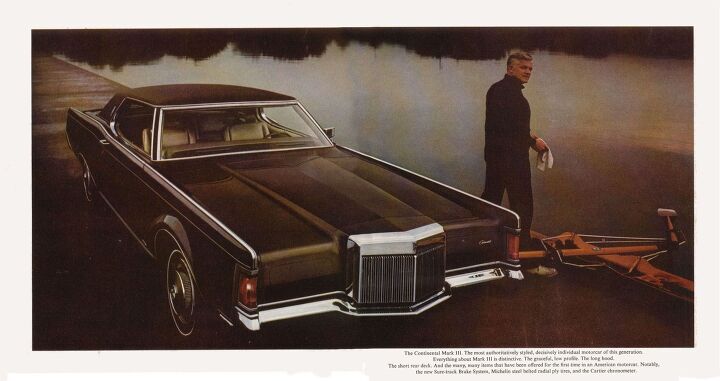





















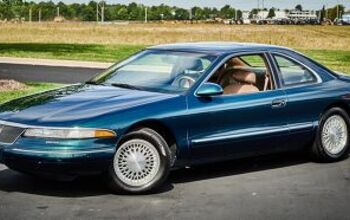
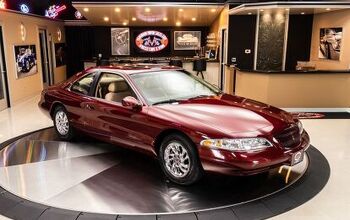
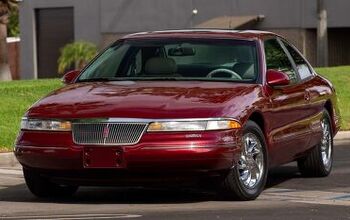
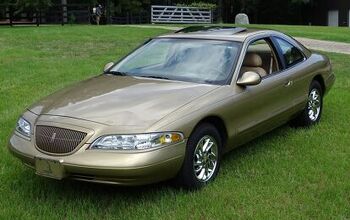
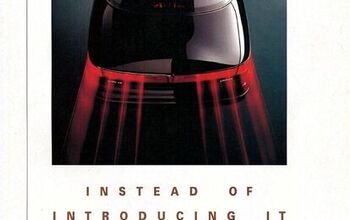










Comments
Join the conversation
I grew up with those land yachts. I did not know they made a Continental Coupe. I don't remember ever seeing one on the road. Even the drop-tops were all 4 door models.
Great series, but in the discussion of wheel cover design I believe you mean "vanes" (like turbine vanes) were applied instead of "veins?" I could not find anything in the dictionary for the application of vanes by using "vaning" or "vanening," however.